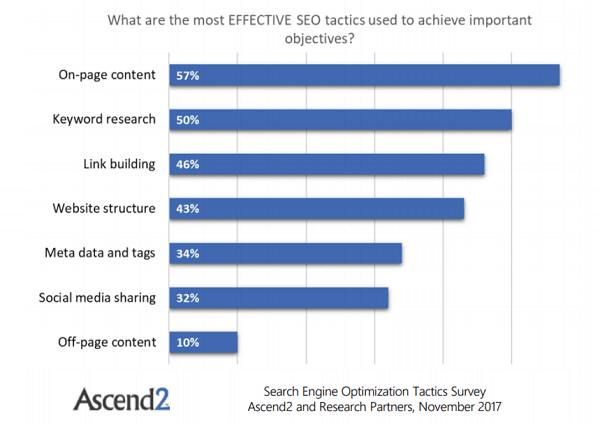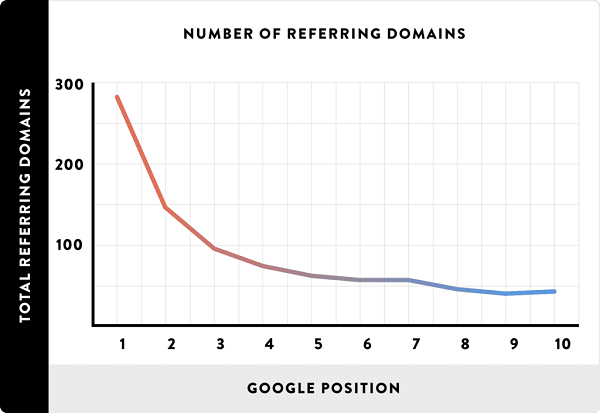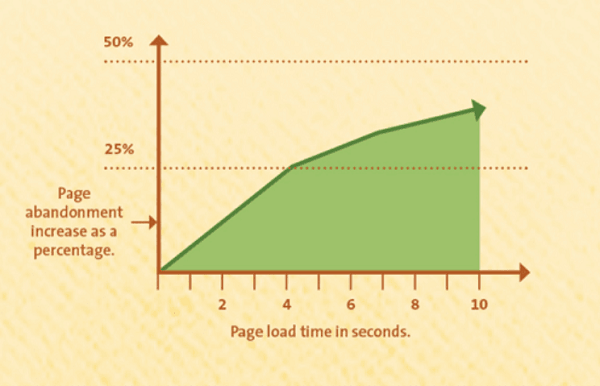Every year, search engine ranking factors update alongside Google’s advances and algorithm updates.
Given the complex nature of SEO, this means that SEO-focused agencies (like RankPay) need to stay nimble and be ready to adjust. In fact, this is pretty fundamental to our ability to deliver consistent results.
One of the biggest SEO challenges marketers face, is staying up to **** on ranking factors. Click To Tweet
There are tons of on and off-page ranking factors impacting performance to varying degrees. So much so that it’s easy for even experienced search marketers to miss (or just plain forget) the occasional consideration.
For novices or DIY types, it means that the task of trying to gain any headway yourself can seem pretty daunting.
With all of the above in mind, we’ve compiled the most important SEO ranking factors and will continue to regularly update this content. Let’s begin!
1. Authoritative Content
These days, you simply can’t have a list of SEO ranking factors without talking about content!
Authoritative content is the bread and butter of SEO. Arm in arm with quality links, these two factors are extremely important. And it makes sense right?
Search engines like Google strive to provide users with useful, relevant content. To get on their radar, your site should have authoritative posts that capture your target audiences attention and provide real value.
Want to see some data supporting these claims? Check out this survey that ranks on-page content as the most effective SEO tactic.

Image courtesy: Ascend2
Surprised? Hopefully not! Content has been of growing significance for the past 5-10 years.
But don’t worry, if you haven’t already invested in this approach, it’s not too late. In fact, there are any number of great ways to start gaining ground on the content front.
You can start small by writing the occasional blog article yourself, but if your really want results you’re going to need a content marketing strategy, fueled by smart research.
If you’re not looking to hire internal talent, many organizations find success outsourcing their content marketing. This is perhaps unsurprisingly an area of vast expertise for us here at RankPay, so please don’t hesitate to reach out and request a free consultation or quote if you think we might be able to help.
We’d be happy to meet with you and learn more about your content marketing needs, and build a strategy focused on results with you.
2. Backlinks
Another SEO factor that’s on par with content is backlinks. As you saw above, it’s in lockstep with content as one of the most crucial elements of any SEO campaign.
After the initial on-page optimization of a website, you’ll inevitably want to focus on high-quality linkbuilding. Funnily enough, some of the best ways to do this involve leveraging content.
Tactics include guest posting, earning mentions, influencer marketing, and link reclamation.
It’s no coincidence that the top sites on Google have more links than the rest. Brian Dean of Backlinko conducted a study that pretty much sealed the deal.

Image courtesy: Backlinko
Don’t forget though… quality over quantity. This isn’t 1999 folks. Link stuffing and other black hat tactics are not going to help you, and they could earn you a penalty.
But make no mistake about it, high-quality links are still essential to earning higher rankings. Google has simply become much more sophisticated and effective at determining what links are actually high quality.
3. Anchor Text Profile
Another way to maximize the impact of the links you earn, is to assess the anchor text used. This refers to the string of text where the link is embedded.
Typically you want to use anchor texts that are relevant to the content being linked to. Web crawlers and users will then use it to determine what the post is about. The more effective you are at conveying what a page you’re linking to is about, the more likely the user is to be satisfied.
As you might imagine, these are a similarly great opportunity to include your targeted keywords as appropriate.
But be careful, there is such a thing as “over-optimization.” Avoid this by building a diverse anchor text profile. Optimize for anchor text types such as branded text, ***** URLs, and topic-related phrases.
Unfortunately, there’s no one-size-fits-all strategy. Your best bet is to conduct a competitive analysis to find out competitors in your industry are doing.
A competitive research tool like Ahrefs is perfect for this. It works by breaking down a competitor’s organic keyword profile. With the “Keywords Explorer” tool, it can also provide you with keywords to target.
4. On-page Performance Factors
So we’ve talked a bit about off-page factors, and we’ve covered content. But there are still a ton of on-page factors that we’ve yet to talk about.
In addition to content and off-page SEO factors, your site’s rankings are also affected by user experience. Click To Tweet
Providing a memorable user experience is a lot trickier than it sounds. It depends on numerous on-page SEO factors. Here are some of the most important worth considering.
Page Loading Speed
Whether you like it or not, online audiences can be a picky. According to statistics, 40% of web visitors will leave a site that takes longer than 3 seconds to load. This leads to a high bounce rate, which indicates a bad user experience. Here’s our guide to optimizing site speed. We also did a collaborative study with GTMetrix that you can check out here.

Image courtesy: Kissmetrics
Mobile-Friendliness
Two years ago, Google announced that mobile searches have topped desktop searches. With initiatives like mobile-first indexing and Google AMP, it’s clear that mobile is a priority. Conforming to these changes is easy thanks to responsive themes and tools like the Mobile-Friendly Test.
SSL/TLS Certificate
Aside from complying with what Google describes as a ranking signal, HTTPS also boosts the confidence of visitors. If you can assure data security, users are more willing to become subscribers or paying customers. Read more.
Click-Through Rate
The click-through rate or CTR measures the number of clicks to your site in contrast to the number of times the link appeared. Aside from ranking higher in search, you can also improve CTR by optimizing page titles and meta descriptions.
Internal Link Structure
An optimized internal link structure allows visitors to see more of your site. It also helps crawlers discover more indexable pages. This helps spread the “link juice” coming from authoritative and contextually-relevant sources.
5. Brand Signals
SEO and branding go hand in hand when it comes to discoverability, authority, and trustworthiness.
Start by focusing on the social signals on and off a website. This includes the number of likes on a post, the number of followers in a page, etc.
These numbers help users determine the value of a piece of content. As a result, it can increase traffic, re-shares, and the content’s potential for more links.
Finally, remember that Google treats Facebook and Twitter links as if they’re regular backlinks. Their crawlers also use them to measure relevance and discover indexable content — but not as ranking factors.
Conclusion
These ranking factors are just the tip of the iceberg folks.
There are so many to consider when building your SEO strategy, that we could keep covering these all day! Alas, we all need to start somewhere, and these are the more important worth your time, consideration, and energy.
